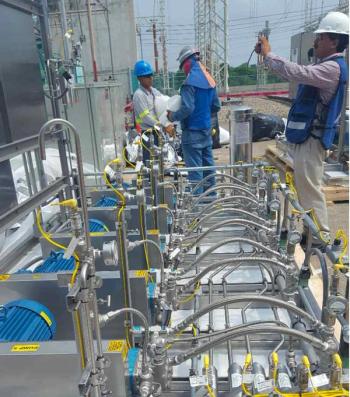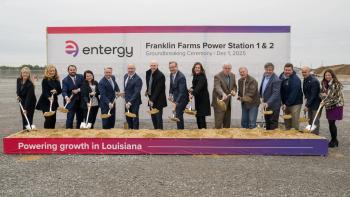
IHI Validates Aviation Vacuum Pump for Aerodynamic Control Systems
The gas-bearing equipped system maintains stable performance during changes in atmospheric pressure, specifically in low-density air flights.
IHI Corp. developed and tested a new vacuum pump with a gas-bearing motor for hybrid laminar flow-control systems (HLFC): aerodynamic control technologies that minimize aviation drag in low-pressure air. The tests were conducted in partnership with Akita University under HLFC simulations at the Joint Research Center for Electric Architecture.
The pump’s gas-bearing motor technology reduces friction and degradation and delivers reliability in the harsh environments of high-altitude flight, thus minimizing necessary maintenance work. Its ultra-high-speed rotation technology offers a compact and lightweight design, reducing drag and additional risks associated with aircraft system mass. Also, the gas-bearing system maintains stable performance and operation in low-density air, even during changes in atmospheric pressure.
IHI’s newly validated vacuum pump and gas-bearing system is designed to improve aviation-related fuel efficiency and reduce CO2 emissions for flights at approximately 10,000 feet. It addresses the issues historically faced by HLFC systems, such as:
- Excessive footprints
- Heavy weight
- Unreliable operation
- Difficulty operating at low-density cruising altitudes
HLFC Technology
HLFC technology actively controls airflow through a powered system, suctioning air through minuscule holes on the wing’s leading-edge surface to minimize crossflow instability. At the wing’s rear, it creates a beneficial pressure gradient to replicate natural laminar flow. The combination of these control methods optimizes aerodynamic performance and efficiency.
More IHI News
Previously, GE Vernova’s Gas Power business, Sembcorp Industries, and IHI Corp. signed a memorandum of understanding (MoU) to cooperatively explore the potential of retrofitting Sembcorp’s
The MoU additionally builds on an agreement between IHI and GE Vernova to develop a retrofittable, 100% ammonia-capable combustion system compatible with GE Vernova turbine models. The project aims to assist Sembcorp in generating low-carbon energy from current power plant assets and supports Singapore’s efforts to diversify the power sector. As a result of the retrofit project, industry confidence for the development of an ammonia value chain in Singapore is expected to rise.
Also, in August 2023,
The facility, located in the Columbia River Corridor, produces sustainable aviation fuel (SAF) using woody biomass as the primary feedstock source. IPSC has experience serving organic matter-based biodiesel, sustainable aviation fuel, ethanol, and renewable natural gas power generation facilities and offers pre- and post-development services that will be used throughout the duration of the NWABF SAF project.
Newsletter
Power your knowledge with the latest in turbine technology, engineering advances, and energy solutions—subscribe to Turbomachinery International today.





